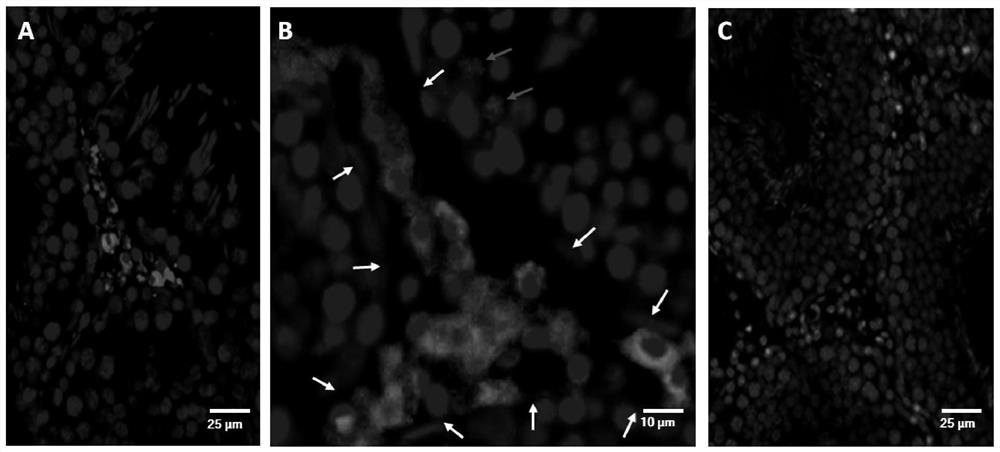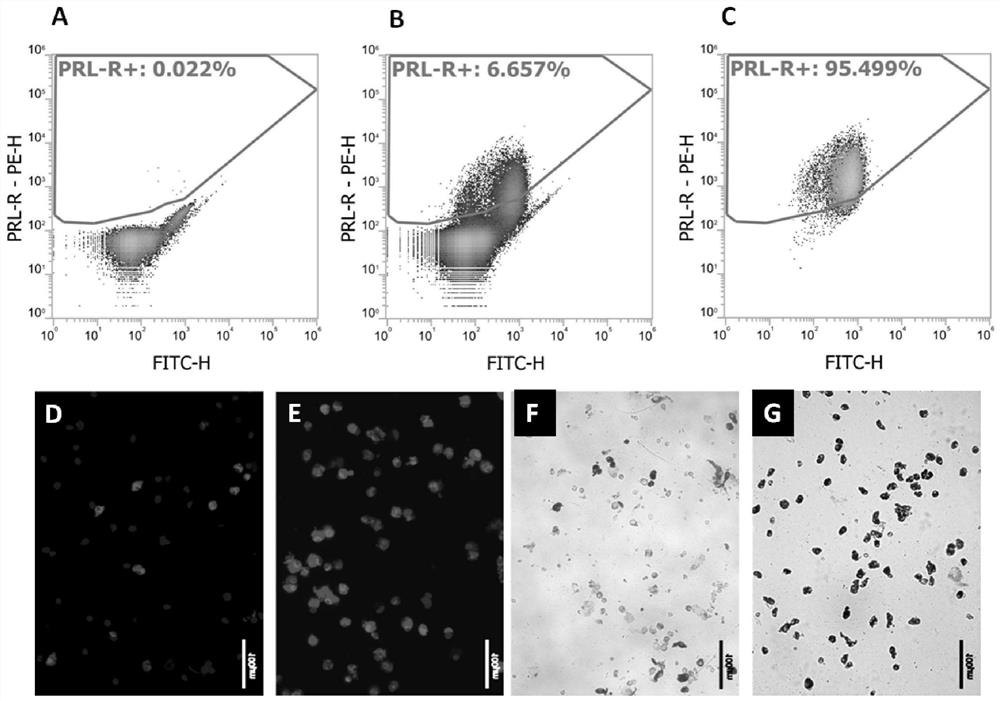Method for separating rat testis interstitial Leydig cells
A testicular interstitial, cell technology, applied in the field of biomedicine, can solve the problems of low cell activity, time-consuming, low cell recovery rate, etc., and achieve the effect of low cost
- Summary
- Abstract
- Description
- Claims
- Application Information
AI Technical Summary
Problems solved by technology
Method used
Image
Examples
Embodiment 1
[0039] A method for separating Leydig cells of rat testis, comprising the steps of:
[0040] Obtain rat testis and prepare rat testis cell suspension;
[0041] Labeled rat Leydig cells;
[0042] The positive cells were screened by magnetic bead sorting (MACS);
[0043] Positive cells were purified repeatedly by magnetic bead sorting.
[0044]Firstly, the rat testis is prepared into a cell suspension, and the preparation method of the suspension is mainly to digest the parenchymal tissue of the testis in a culture medium; the digested tissue suspension is allowed to stand at room temperature, and the supernatant is filtered to obtain Testicular cell suspension for easy separation. Since one of the innovations of this method is to use the magnetic bead sorting method to screen rat Leydig cells, it is necessary to cooperate with magnetic markers to mark the magnetic particle markers on the surface of rat Leydig cells, and then perform positive cell selection. Transfer the mag...
Embodiment 2
[0060] Reagent
[0061] DMEM / F12 cell culture medium, bovine serum albumin (BSA), collagenase type IV, testosterone, testosterone-d3, and penicillin / streptomycin double antibodies were purchased from Sigma-Aldrich (St. Louis, Missouri). Trypan blue solution (0.4%) was from ThermoFisher (Waltham, MA). The reverse transcription kit was from Promega (Madison, WI). 480 Green I Master is from Roche (Basel, Switzerland). Anti-mouse IgG1 magnetic particles and BD IMag TM Buffer (10X) was from BD Biosciences (Franklin Lakes, NJ). LH was from MyBiosource (San Diego, CA). Dihydrotestosterone (DHT) and 5α-androstane, 3α, 17α-diol (3α-diol) and 25-hydroxy-vitamin D (25-OH-VD) ELISA kits were purchased from Jianglai Biotechnology Technology Co., Ltd. (Shanghai, China). Dexmedetomidine (DEX) was from Yangzijiang Pharmaceutical Group Co., Ltd. (Taizhou, China). Acetonitrile and methanol were from Merck (NJ, NJ).
PUM
 Login to View More
Login to View More Abstract
Description
Claims
Application Information
 Login to View More
Login to View More - R&D
- Intellectual Property
- Life Sciences
- Materials
- Tech Scout
- Unparalleled Data Quality
- Higher Quality Content
- 60% Fewer Hallucinations
Browse by: Latest US Patents, China's latest patents, Technical Efficacy Thesaurus, Application Domain, Technology Topic, Popular Technical Reports.
© 2025 PatSnap. All rights reserved.Legal|Privacy policy|Modern Slavery Act Transparency Statement|Sitemap|About US| Contact US: help@patsnap.com



